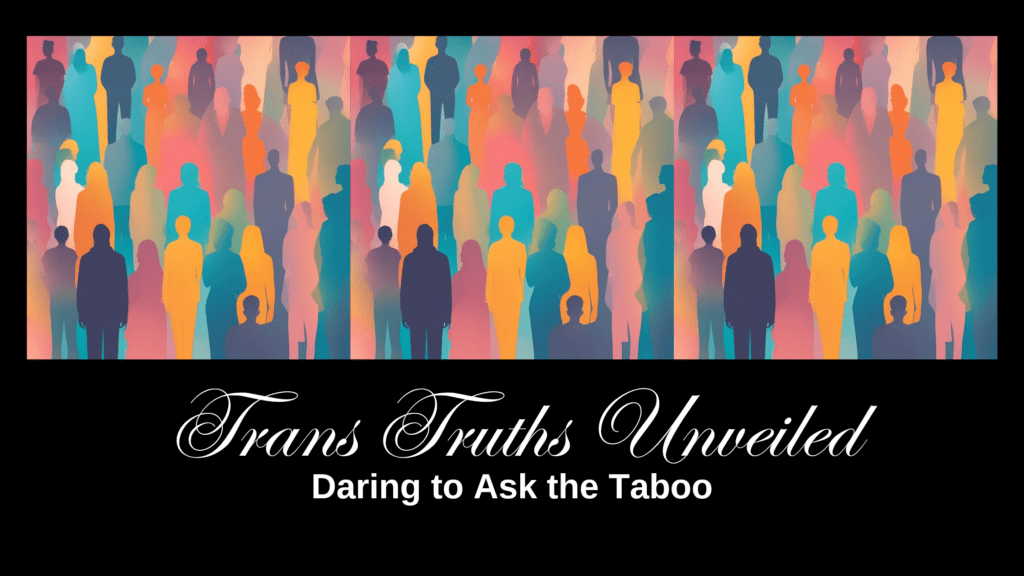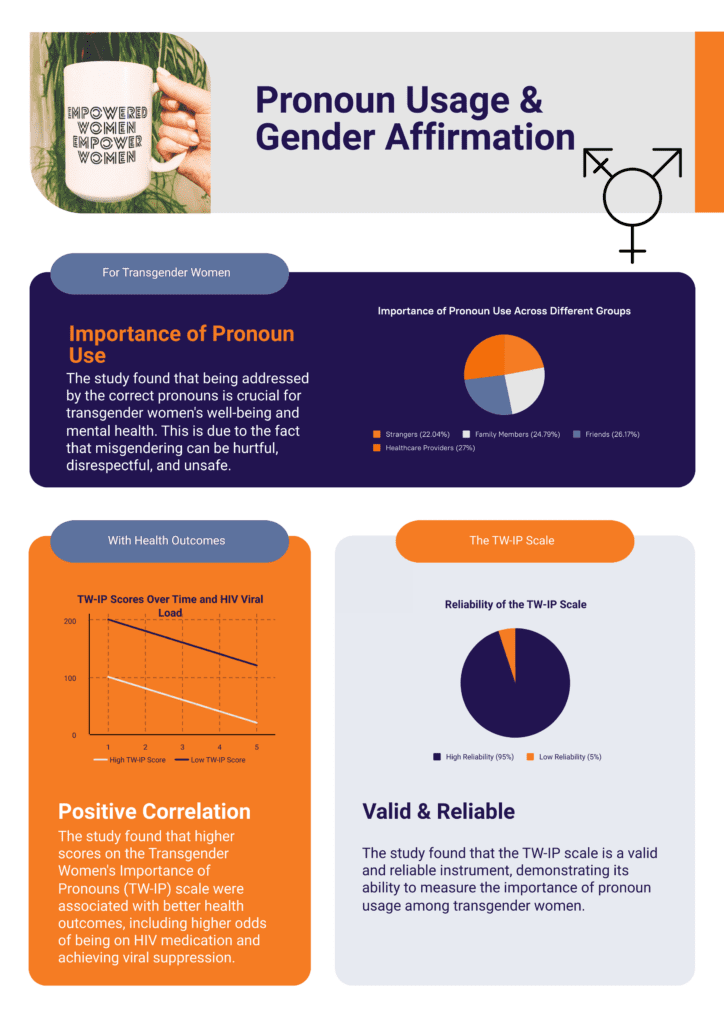
As an Amazon Associate, I earn from qualifying purchases. This means that if you click on a link on this website and make a purchase on Amazon’s site, I may receive a small commission at no extra cost to you. Please note that while I do earn a commission on qualifying purchases, I only recommend products that I personally use, believe in, or feel would be genuinely helpful to my audience. Your support through these links helps me keep this blog running and continue providing valuable content to the trans masculine community. Thank you for your support!
Ever found yourself stuck in a conversation where you wanted to ask that one burning question about transgender experiences but felt too shy or unsure? You’re not alone! As someone navigating the complex landscape of gender identity, I’ve encountered questions that seem too invasive to voice. In this post, we’re diving into those awkward conversations and illuminating the often- misunderstood aspects of being trans. Let’s unravel the truths together, shall we?
Questioning Identity and the Complexity of Being Trans
In today’s society, understanding gender identity can be complicated. With social norms dictating so much of our behavior, it’s crucial to share personal experiences. You might be surprised to know how many people grapple with their gender identity, often feeling lost or trapped between expectations and their true selves. Let’s dive into the multifaceted nature of being trans.

Personal Experiences with Gender Identity
Your journey may resonate with many others. Imagine this scenario: you’re expected to fit into a box. That box is traditional gender roles based on societal norms. It can be crushing, right? The reality is, gender doesn’t have to be black and white. Many trans individuals discover their identities through trial and error. For some, revelations can happen at a young age, while for others, it may take a lifetime to embrace who they really are.
- Exploration: Some try out different expressions of gender. This exploration can be liberating.
- Acceptance: Finding acceptance from oneself is often the toughest battle. It’s one thing to know who you are; it’s another thing to embrace it.
- Support: The role of supportive friends and family is invaluable. They can help ease the struggle of self-acceptance.
Struggles of Acceptance
Finding acceptance within yourself and from others is no easy feat. It’s like standing on a tightrope, balancing between the desire to be true to yourself and the fear of rejection. You may feel that the world only sees you through one lens—your identity as a trans person. This oversimplification can lead to emotional turmoil.
As the saying goes, ‘Everybody is transphobic until they’re not.’ This means that many people carry inherent biases, sometimes without even realizing it. The journey towards understanding is filled with bumps. Strangers often don’t see past the labels you bear. If someone misgenders you, how do you feel? Not great, I’d imagine.
Misconceptions Surrounding Gender Expression
Misconceptions about gender identity are prevalent in society. Many think that being trans is merely a phase or a trend. That belief can lead to serious misunderstanding and hurt. Let’s clarify some of these misconceptions:

It’s important to recognize the diverse identities within the trans community and show empathy. Not every trans person will fit the societal expectations of what a trans person should be. Recognizing this diversity is key to fostering understanding.

Societal Expectations of Gender Roles
Have you ever thought about how society imposes gender roles on us? From childhood, we’re bombarded with messages about what it means to be a boy or girl. Toys, clothing, and even the colors we’re deemed to wear are dictated by rigid norms. It’s a much-needed conversation—how these roles affect people in real life.
Many struggle with this pressure. There’s the fear of not fitting in. Your identity may feel like an outrageous act of defiance. It takes courage to step outside that box. Personal stories from those who’ve done just that can inspire many.
The Importance of Sharing Stories
Sharing experiences is an essential piece of the puzzle. It can create a sense of community. People often do not realize how powerful their stories can be. Have you ever heard someone speak openly about their journey and found comfort in those words? That’s the essence of connection.
You also have the right to ask questions, even uncomfortable ones. Engaging in dialogue can dispel misconceptions. For instance, discussing feelings of jealousy about what cis individuals may take for granted allows for honest conversations.
In conclusion, while the conversation about identity is complex, it is vital. You deserve to feel seen and understood, not just through a single label but as a whole individual. Recognizing the intricacies of being trans helps create a more inclusive world.
Navigating Conversations about Gender: The Importance of Pronouns
Understanding how to engage in conversations about gender and pronouns can be challenging. You might feel hesitant or unsure about the right terms to use. Rest assured, you’re not alone. Many individuals share this experience and want to promote a more inclusive environment.
Understanding Misgendering and Its Impact
When talking about gender, the term “misgendering” comes up frequently. Misgendering occurs when someone is referred to using incorrect pronouns or gendered language. This can happen unintentionally, but the consequences can be significant.
For trans individuals, being misgendered can lead to feelings of dysphoria, anxiety, and even depression. Words carry weight, don’t they? Just think about it—how would you feel if people consistently referred to you with the wrong name or pronouns? It hurts.
How to Properly Correct Misgendering
So what do you do when you hear someone misgender another person? It’s important to address this situation sensitively. Here’s a simple guide:
- Acknowledge the Mistake: If you notice someone using the wrong pronouns, politely intervene. Remember, your goal is to help, not embarrass anyone.
- Use “I” Statements: Frame the correction around your feelings. For instance, “I believe Alex uses he/him pronouns.”
- No Need to Dwell: As one insightful voice noted, ‘The best thing that you can do is just apologize and correct yourself.’, without lingering on the mistake.
Keep these steps in mind next time you find yourself in this situation. Correcting misgendering is vital, and your efforts matter.
The Impact of Pronouns on Trans Individuals
Using the right pronouns is very important for transgender people. A new study looked at this issue in trans women and created a scale to measure it (referred to as TW-IP). The scale asks about how important it is for different people to use “she” when talking about a trans woman.
The study found that pronouns matter a lot. On a scale of 1 to 5, with 5 being most important:
- Trans women rated strangers using “she” as 4.96 out of 5
- Family members using “she” was 4.74 out of 5
- Healthcare providers using “she” was 4.83 out of 5
These high scores show that using the right pronouns is crucial. The study also found that when pronouns are used correctly (specifically in HIV positive trans woman):
- Trans women are 34% more likely to have their HIV under control
- They are 25% more likely to take their HIV meds
- They have 2.1 times higher odds of taking HIV meds perfectly

In short, using the right pronouns isn’t just polite – it has real health benefits. This study proves that small acts of respect, like saying “she,” can make a big difference in trans women’s lives and health. And although this study was specific to trans women, the same idea can be applied to trans men, non-binary folks, and other gender non-conforming people.
Practical Tips for Respectful Conversations
Want to have meaningful discussions about gender? Here are some practical tips:
- Ask Open-Ended Questions: Instead of assuming someone’s pronouns, ask, “What pronouns do you use?” This invites conversation.
- Be Mindful: Use inclusive language that respects all identities. It can set a positive tone.
- Share Your Pronouns: Offering your own pronouns first can encourage others to share theirs.
Personal Anecdotes and Scenarios
Sometimes, real-life examples can illustrate larger points. Take Sarah, for instance. When her friend Tim transitioned and began using he/him pronouns, she made an effort to adapt. Initially, it was tricky, and she slipped up. Instead of letting embarrassment take over, she simply apologized and corrected herself. It was a step towards understanding and support.
Think about your conversations. Are there common scenarios where misgendering occurs? Family gatherings often spark confusion. If someone uses incorrect terms, gently correct them and provide the right information. This allows for smoother discussions.
Conversations about gender can be complex. It requires understanding. It requires respect. You have the power to create a more welcoming and inclusive atmosphere.
Dysphoria and Sexuality: A Personal Perspective
Understanding Dysphoria in the Context of Intimacy
Dysphoria can feel like an anchor pulling you underwater. It’s more than just discomfort; it’s an emotional storm that can complicate your intimate moments. When you’re navigating relationships, intimacy may come with a whirlwind of feelings regarding your body. Have you ever wondered how your own experiences shape your comfort with physical closeness?

Many transgender individuals face difficulties with intimacy due to dysphoria. They may feel out of sync with their bodies. This disconnect can make even simple acts of affection feel daunting. For some, simply kissing might turn into a battleground of insecurities. It’s essential to recognize that *dysphoria is different for everyone*. Understanding where you stand is the first step toward building connections.
Exploring Sexual Preferences and Feelings
Let’s chat about sexual preferences. Your attraction can be as fluid as the tides. Each person experiences their sexuality uniquely. For some, pleasure might be enhanced by hormones, while for others, it could be complicated by feelings of shame or anxiety. The key question is: What feels right for you?
Some may find joy in embracing their authentic selves, while others might struggle with societal expectations. Navigating through your preferences can be unsettling. It’s okay to question what turns you on or off. Learning to communicate these aspects is vital. You wouldn’t climb a tree without knowing the first branch, right?
- Identify your comfort zone. What makes you feel good?
- Share your boundaries. It’s your right!
- Be open to exploration. You’re in the driver’s seat.
“It’s absolutely your responsibility to tell people what you are okay with and what you’re not okay with.”
Trans Experiences in Relationships and How They Vary
Every relationship has its uniqueness, especially in the context of being transgender. Relationships can feel like navigating a fine line; you might find joy in intimacy but also deal with moments of vulnerability. Remember when you first fell in love? Everything felt exciting yet terrifying, right? Trans individuals share this complex dance, often adapting to evolving expectations.
Have you noticed when you interact with potential partners? It’s about setting the right tone. Some may appreciate transparency about your experiences. Others might need time to understand. The best approach? Be honest. Create an atmosphere of openness where both partners can express their feelings.
| Feeling | Common Responses |
| Dysphoria during intimacy | Silent discomfort, avoidance, withdrawal |
| Acceptance of body | Increased confidence, exploration of self |
| Jealousy over cis experiences | Reflection, comparison, self-destructive thoughts |

The significance of setting boundaries cannot be overstated. You are *allowed* to advocate for your comfort during intimate moments. Adaptations might include dimming the lights, keeping clothes on, or steering clear of certain activities. Each person needs their space to express themselves fully without additional distress.
Think about it: each connection should allow for safety and understanding. It’s through shared experiences that partners can bond over personal journeys. Understanding the triggers of dysphoria during intimate encounters will enrich your relationships. Each experience is a stepping stone, not a stumbling block.
Embracing Your Unique Journey: Fostering Open Dialogues
As you navigate these complexities, remember that you’re not alone. Many share your journey. It’s essential to create *safe spaces* for dialogues about dysphoria and sexual experiences. There’s no script that fits all, but your story counts.
Your journey with dysphoria and sexuality is vibrant. Celebrate it, share it, and heal through connection. Wouldn’t it be great to foster effortless conversations about these topics? The banal can become beautiful when it’s discussed openly.
The Reality of One’s Transition: Expectations vs. Reality
Transitioning is much more than a physical change. It’s a journey packed with profound experiences. It’s filled with shifts in perception, identity, and emotional well-being. As a trans person, you might be excited, scared, or both. But what does this transition really look like? Let’s explore that.

Significant Changes
When you begin your transition, the changes can be both exhilarating and daunting.
- Physical Changes: From hormones to surgeries, the transformations can be remarkable. You may notice your voice deepening, your body becoming leaner or more muscular, and potentially visible changes in your facial structure. These shifts take time. Some transitions are quick, others gradual. What remains constant is the need to adjust to these new realities.
- Social Changes: Expect your relationships to change. Friends may be supportive, or they might struggle to understand your journey. You might find some people drift away, while new friendships blossom. Remember: surrounding yourself with positive influences can make a difference.
The Psychological Impact
Seeing oneself change can be overwhelming. It’s a process filled with ups and downs. Here are some thoughts to consider:
- Body Image: You might find yourself staring in the mirror, waiting for changes to pop out. That’s natural! Every day, you might ask yourself, ‘Every morning I’d wake up and be like, oh, what’s different about me now?’ The curiosity is part of the experience, but it can also lead to feelings of dysphoria.
- Mental Health: The emotional roller coaster can be intense. Fluctuating hormone levels from testosterone can lead to mood swings. Sometimes you feel on top of the world; other times, everything feels heavy. It’s vital to seek support, whether through friends or professional help. Therapy can provide tools to navigate these feelings.
- Expectation vs. Reality: You might enter this journey with dreams of what you think it will be like. Reality, however, often looks different. Transitioning isn’t a straightforward path. There are beautiful moments and hardships alike.
Realistic Expectations of Transitioning
You might have heard stories of miraculous transformations or seen your favorite influencers online. But let’s set the record straight:
- Time is Key: Allow yourself time. You won’t wake up one day and feel like a completely new person. Healing—emotionally and physically—takes time. Embrace the journey. It’s okay to have bad days. Using something like this transition journal can help you track your transition and feelings associated with it. It’s nice to have something to look back on when you’re feeling frustrated by lack of progress.
- Community Matters: Finding community can have a profound impact. Whether through support groups or online forums, connecting with others who understand your feelings can label your journey as less lonely. It’s rejuvenating to hear different perspectives and experiences.
- Physical isn’t Everything: While surgeries and hormone treatments are significant, it’s essential to focus on your mental health and self-acceptance. A healthy mind often leads to a healthier body image. And remember, surgery and hormones aren’t for everyone.
The Excitement and Fear
Transitioning can evoke a whirlwind of emotions. You might feel excitement at the prospect of your transformation. Yet, there might also be fear. Fear of judgment, rejection, or not fitting into the expectations set by others or even yourself. But recognizing these feelings is crucial. They are are part of your adventure.
In society, the narrative around transition often emphasizes success stories. Unfortunately, this can make the reality seem like failure for many. The truth? Everyone’s transition is unique, shaped by personal experiences, societal perceptions, and individual identities.
Nor should you overlook the fact that personal stories are powerful. Just like the host in the video stated, personal moments of connection, be it parental support or the comfort of a friend, can significantly shape how you perceive and experience your own journey.
Each small step taken in your transition deserves recognition. Celebrate your victories, no matter how minor they seem. Because they build up to a beautiful conclusion, slowly but surely.
Whether through hormones, surgeries, or personal acceptance—know that you’re not alone in this journey. You are writing your own story, one small step at a time.
Community, Acceptance, and the Road Ahead
When it comes to navigating life as a trans individual, one of the most crucial elements is community support. A strong, supportive network can be a game changer. It can provide the love and understanding that many need to thrive. But why is this support so significant?

The Significance of a Supportive Network
Imagine facing the world without a safety net. For many trans individuals, a supportive community is that net. Consider the following points:
- Emotional Support: A caring network can help you heal from past trauma.
- Social Validation: Being around people who accept your identity boosts self-esteem.
- Resource Sharing: Knowledge about healthcare, legal rights, and advocacy opportunities are often available within supportive communities.
For instance, personal stories can highlight this impact. One trans man shared that his friends saw him for who he truly was, not just as a label. This kind of acceptance helped him feel whole and less alone. So, how can you find or build this network? Start by reaching out to local LGBTQ+ organizations, online forums, or support groups. Every little bit helps!
Coping Mechanisms and Resilience in a Challenging Environment
Life isn’t always kind. You might encounter discrimination or prejudice, which can be exhausting. This is where coping mechanisms come into play. Here are some effective strategies:
- Mindfulness: Practice grounding techniques to remain present.
- Find Outlets: Creative outlets like writing or art can help express feelings.
- Talk it Out: Whether it’s with friends or a therapist, sharing your feelings can relieve stress.
Think of resilience as a muscle. The more you exercise it, the stronger it gets. For example, someone facing dysphoria might find comfort in talking to friends who understand their feelings. They may even find humor in tough situations, fostering resilience through laughter.

‘I miss not experiencing transphobia.’
This quote resonates with many trans individuals. It encapsulates the longing for a world where acceptance is the norm, rather than the exception. Hence, building resilience is not just about endurance; it’s about celebrating progress and holding onto hope.
Looking Towards the Future of Trans Rights and Awareness
What does the future hold for trans rights? Change is already happening. Conversations around trans rights are more prevalent than ever. This increases awareness and brings more solidarity. Here are some important current trends:
- Legislation: Various countries are proposing and passing laws that protect trans rights.
- Visibility: More trans individuals are sharing their stories, leading to greater acceptance.
- Healthcare Access: Discussions on enhancing healthcare service for trans individuals are expanding.
These advancements mean the conversation is shifting towards respect and understanding, but challenges remain. For instance, misinformation can still fuel discrimination. That’s why it’s essential to continue advocating for awareness and sharing accurate information. Each voice counts. Change begins with you and your willingness to participate.
| Year | Context | Significant Changes |
| 2010 | Awareness Campaigns | Increased visibility for trans issues across media. |
| 2020 | Legislation | New laws protecting trans rights in some regions. |
| 2023 | Community Support | Evolving social networks ensure safety for trans individuals. |
Conclusion
In conclusion, the road ahead for trans individuals presents both challenges and opportunities. Community support is paramount. Resilience and coping mechanisms are essential for navigating hardships. As awareness of trans issues continues to grow, you can feel hopeful about the journey ahead. Remember, your voice is powerful in creating a world that celebrates rather than discriminates.
TL;DR: Community support for trans individuals is vital for emotional well-being. Coping mechanisms and resilience are essential in the face of adversity. The future of trans rights shows promise, with increasing awareness and supportive legislation. Change begins with you!
Questions? Comments? Concerns? Feel free to leave a comment below, email me here, or fill out our Contact Me form. I look forward to hearing from you!


